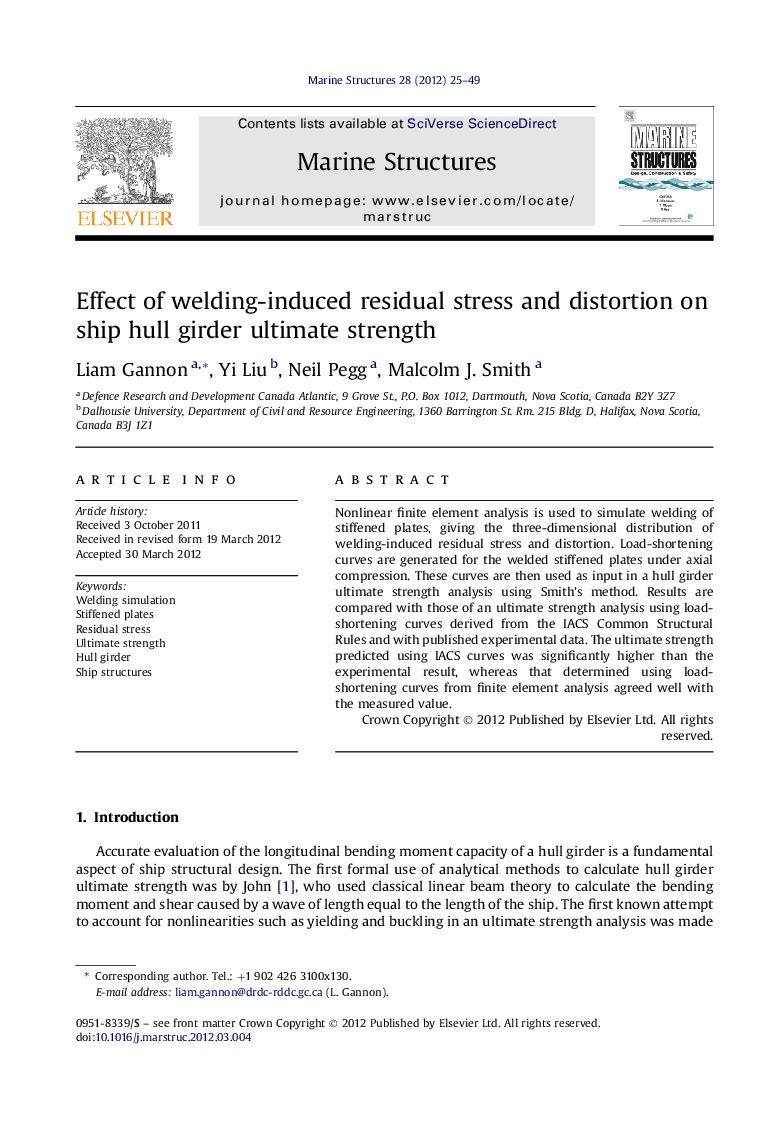| Article ID | Journal | Published Year | Pages | File Type |
|---|---|---|---|---|
| 293914 | Marine Structures | 2012 | 25 Pages |
Nonlinear finite element analysis is used to simulate welding of stiffened plates, giving the three-dimensional distribution of welding-induced residual stress and distortion. Load-shortening curves are generated for the welded stiffened plates under axial compression. These curves are then used as input in a hull girder ultimate strength analysis using Smith's method. Results are compared with those of an ultimate strength analysis using load-shortening curves derived from the IACS Common Structural Rules and with published experimental data. The ultimate strength predicted using IACS curves was significantly higher than the experimental result, whereas that determined using load-shortening curves from finite element analysis agreed well with the measured value.
► Finite element welding simulation predicts residual stress and distortion. ► Reduction in residual stress and distortion due to applied loads. ► Strength of a box girder simulating a ship hull girder was predicted accurately. ► The IACS Rules may lead to over-predictions of hull ultimate strength. ► Welding-induced residual stresses decrease hull girder ultimate strength by 3.3%.
